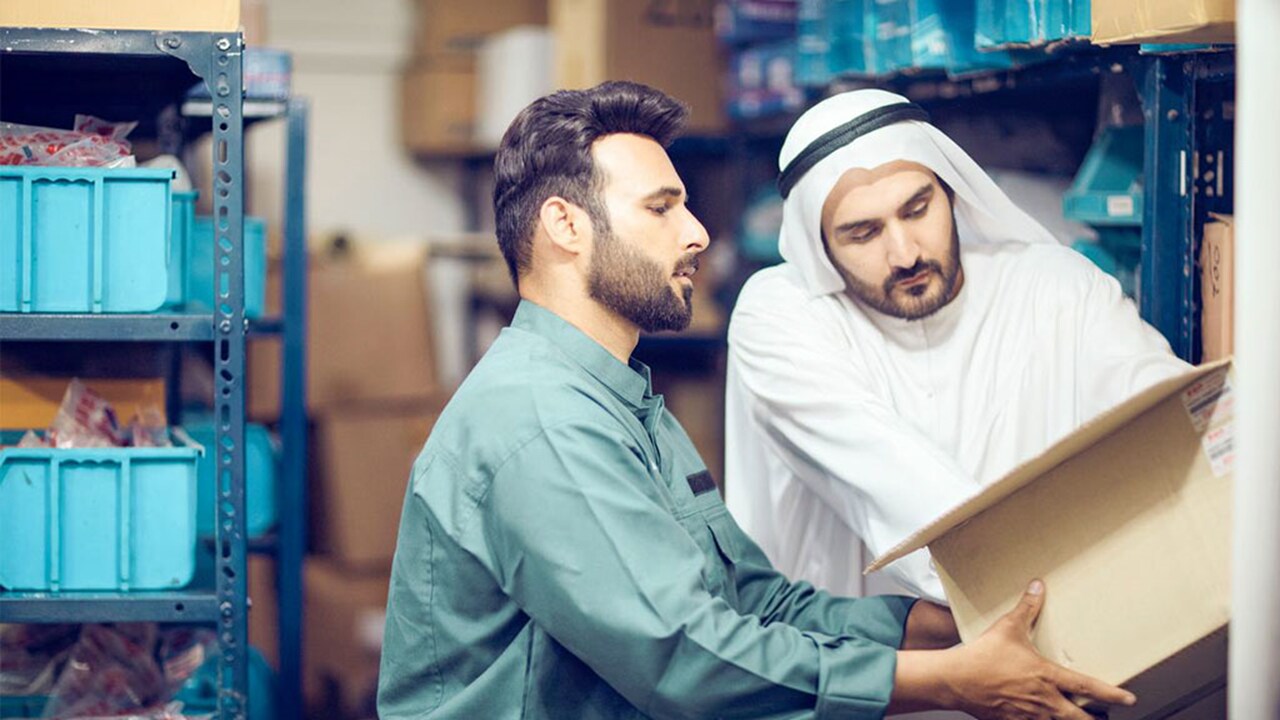When a business needs to move its goods, it needs to consider its logistics. How will their product, grown or designed so carefully, reach their target costumers? How can it be moved in a way that leaves the customer with the best possible experience so that the brand can be well perceived, and perhaps, recommended to others?
These days, moving goods can appear very complicated, requiring some companies to spend a lot of time – normally devoted to their core business – figuring out legislations, customs, transport methods, contracts, warehousing, omnichannel, decarbonisation, etc. which is no easy feat. The key to navigate this complexity is often to ask for help from logistics experts that can support businesses with their specific needs, advising on logistics models like third-party logistics (3PL) and fourth-party logistics (4PL).
What are the logistics models?
When looking into 3PL, 4PL, and similar models; it is important to state: today, there is no unified, industry standard definition of these terms. Hence, claiming this is a complex topic barely scratches the surface. Gartner confirmed last year that “even those within the industry who understand the 4PL concept struggle to define what services a 4PL provides and how it’s different from a 3PL”. Nevertheless, this research piece tries to find commonalities in definition to break down the complexity around these models.
According to Supply Chain Digest, the first appearance of the term ‘4PL’, was in 1996 when the term was coined by Accenture (ex-Andersen Consulting) as, “an integrator that assembles the resources, capabilities, and technology of its own organization and other organizations to design, build and run comprehensive supply chain solutions.” Since then, a lot has certainly changed both in the logistics universe as well as in the world. Ways of doing, customer expectations, concerns, market conditions, technology – almost everything is different in this field since the late 90s, re-shaping logistics and supply chains to something nearly brand new.
With this in mind, before diving into understanding the definitions, characteristics, and advantages of 3PL or 4PL, it is necessary to consider what comes first, hence the models called first-party logistics (1PL) and second-party logistics (2PL).
With 1PL, first-party logistics, a business has full control over its entire logistics process and transports its products directly from its production to their end-customers. As a strategy, 1PL requires business owners to manage their entire logistics, meaning having the needed expertise and assets to cover all the steps end-to-end, which can be difficult and take time. An example of this could be a brewery owning their own trucks to deliver their beer directly to their customers. This solution only works in very specific circumstances, mostly with manufacturers and distributers that own their own assets.
With 2PL, second-party logistics, businesses can delegate their logistics from one location to another to a logistics carrier that has an established network and owns the logistics assets. This solution relieves from some of the work of transportation, but not entirely. While businesses can delegate the execution, they are still responsible for the management. This level provides businesses with economies of scale by leveraging and utilising a network of assets.
What is 3PL?
With 3PL, third-party logistics, businesses work directly with providers, especially those experiencing rapid growth. Specific industries (such as tech, retail and lifestyle companies) often need to outsource logistics operations, so 3PL can be the perfect solution. Across the industry a 3PL can have different characteristics, all falling into three types:
- This can be identified in a flexible Non-Vessel Operating Common Carriers (NVOCC) which as clarified by Marine Insight, do “not own or operate ocean transport vessels. Instead, they make arrangements with ship owners, charterers, or shipping lines for transportation of cargo”;
- A 3PL model acting more as a 2PL, a trucker, or a warehousing provider. A “traditional” 3PL model that can execute a variety of logistics and transportation services such as freight transportation, booking, documentation, order fulfilment, warehousing, customs brokerage, and procurement at scale, but providers don’t own assets (such as trucks, rail, or warehouses) and rely on 2PL providers for it;
- A 3PL model linked to supply chain management. Where the 3PL acts as the customer representative towards the goods’ suppliers and vendors. For instance, to ensure that contractual obligations such as delivery time, quantities, etc. are honoured, which is critical for the sourcing setup of the brand who is buying overseas.
A 3PL can also work as any of the three models in one.
Old 4PL vs new 4PL
With 4PL, fourth-party logistics - also called lead logistics or control tower– providers offer even more, particularly taking away the burden of managing the entire supply chain. 3PL provides an extension of the logistics team that is actively present and participates in locations where there is a need for the customer to be represented (e.g., at origin with the vendors). A traditional 4PL provider is an orchestrator that oversees all transport management. Providers take ownership of the coordination and management of a variety of 2PL/ 3PL players involved in an end-to-end logistic offering, as well as coordinating the vendors. This solution is great for large businesses, for example in FMCG or chemical, that have complex supply chains operating over multiple origin countries and multiple destinations.
It is very interesting to also see how the role of 4PL is changing into a “new 4PL”, which is a more holistic supply chain control tower, with a capabilities not only on logistics, but also on supply chain planning, inventory management, demand management, and supply management. The key difference is that while a 3PL provider focuses solely on logistics, and an advanced type of 4PL provider gives full visibility across the supply chain. “According to Gartner, “4PL service providers are becoming increasingly popular in today’s highly complex logistics environment, which is awash with risk and disruption.”
Each of these above-mentioned supply chain models has pros and cons, depending on the needs and strategies of a company. So, when should a company consider using a 3PL vs 4PL? It all depends on what benefits and advantages a business is looking for.
What are the benefits of choosing 3PL?
The advantages when choosing a strategy like third-party logistics depends on the kind of 3PL that is chosen:
A 3PL as a flexible Non-Vessel Operating Common Carriers (NVOCC) or non-asset operating, a “traditional” 3PL model offers both:
- Lower cost: Choosing a 3PL provider might help with eliminating the costs associated with warehouse space, technology, transportation, billing, audits, and optimization. This results in less spending, therefore higher chances to re-invest in other parts of their businesses, such as production, customer care, etc.
- Scalability and flexibility: Choosing a 3PL provider can also help with scaling space, transportation, and labour according to inventory needs, giving a chance for businesses to divert their focus on expanding or flex their distributions.
A 3PL model linked to supply chain management can offer:
- Geographical presence: This model allows businesses to have the ability to be where their suppliers and customers are, without having to be present in all locations worldwide. For example, if a brand sees the need to produce in Asia, but can’t build offices in all countries, this kind of 3PL model can support and enforce their guidance, regulations, standards, and strategy locally.
What are the benefits of choosing 4PL?
Fourth party logistics has become an “end-to-end supply chain and logistics partner” confirms Gartner, orchestrating all supply chains actors for the best possible outcome. Choosing 4PL has the following advantages:
- Handled complexity: With a 4PL provider the entire logistics process is streamlined and integrated for better coordination. By integrating systems and supply chain steps, while using a single point of contact – eliminating complications or possible mistakes – a 4PL provide can elevate a business’ supply chain to a higher standard that allows for growth, resilience, efficiency, and flexibility.
- Better visibility: 4PL providers can tap into innovative technology such as specialised software, AI technology and automation to improve visibility across the supply chain, predict congestions and effectively manage logistics with better visibility. This advantage can be used to boost resilience and flexibility as well as the decarbonisation of processes across the entire supply chain.
Both 3PL and 4PL can offer a solution-oriented service that focus on strong partnerships (with 4PL reaching a deeper level), operational excellence, great customer care, and strategic guidance based on industry trends and insights.
Combining models
Another option for businesses is to create unique value by combining 2PL, 3PL or 4PL models through hybrid options. This solution can bring to life a unique model that fits the specific requirements of each individual business, as well as using add-ons for a compelling solution. Technically, every brand uses a combination of models, but the key is how they combine such models to fit their specific business outcomes and stay resilient. A big part of this is how deep they outsource, being able to focus on their core business.

What is the future of supply chain management
According to Statista, the global 4PL market will grow at a CAGR of 5.6% between 2019-2027, reaching a revenue valuation of $86.26 billion by 2027. Moreover, Gartner states shippers are actively seeking out 4PL service providers to form closer, integrated, and longer-term value-driven partnerships.
After 1, 2, 3, 4PL … what is next? Currently, the next generation of logistics models are being crafted, and they include a big game changer: the smart collection of data to gain meaningful insights. “The amazing part is the transition from what is traditionally called supply chain management, only focusing on transportation and logistics, into a proper supply chain management which unlocks new potential and more meaningful insights” says Lars Schmeltzer, Global Key Account Director Renewables at Maersk. The current 4PL model gives good container level visibility but is not yet strong enough for forecasting insights. As mentioned by SupplyChain247, “with greater transparency between different tiers of the supply chain operation, partners can communicate with each other to leverage combined resources in pursuit of shared objectives.”
Upcoming models and tools are being upgraded, to resemble “control towers” where, by sharing data, the digital and physical worlds connect to break down existing silos. In the new 4PL vision business can better strategize, integrating their customers’ data into their decision making. In this model, one integrated logistics partner can orchestrate supply chains, solving real-life problems much quicker thanks to a series of demand, capacity, inventory and buying forecasts. The benefits? Real-time planning, improved decision making and resilience for optimized, integrated, solution-oriented logistics.
Sign up to The Logistics Pulse newsletter
You did it, welcome onboard!
We're sorry, but there was a problem sending your contact request.
Please review the form fields and ensure all required information is provided correctly. If the issue persists, please contact our support team for further assistance.
Sign up to The Logistics Pulse newsletter
Receive our insights directly in your mailbox by signing up through this form and enter a world of truly integrated logistics. Get inspired by our selection of articles that help you navigate supply chains, understand industry trends, and shape your logistics strategy. You can unsubscribe anytime.













